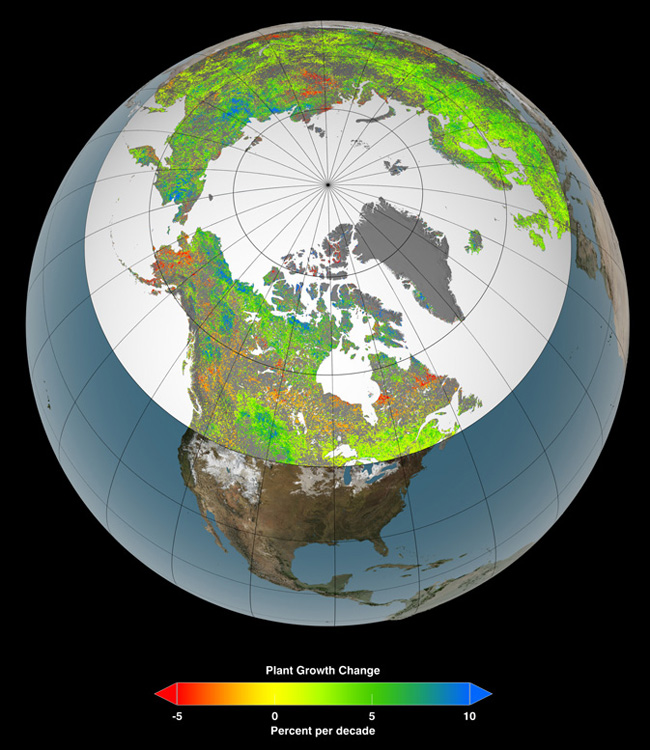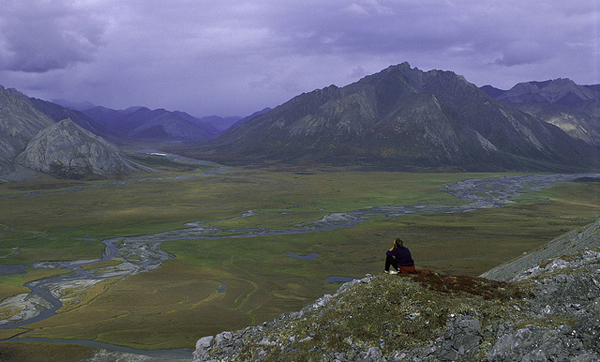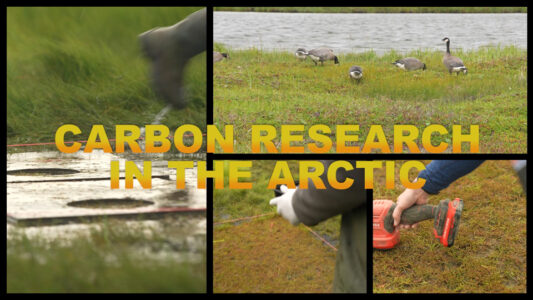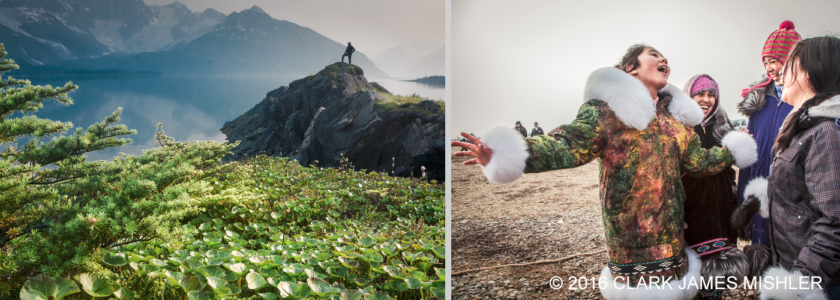
Laura Nielsen for FrontierScientists
The face of the Arctic is changing as plant growth flourishes further north than before. According to the National Aeronautics and Space Administration (NASA), “Temperature and vegetation growth at northern latitudes now resemble those found 4 degrees to 6 degrees of latitude farther south as recently as 1982.” This change accompanies the ongoing anthropogenic climate change associated with our warming world. Satellite data from the past 30 years helped researchers understand the vegetative change, and the findings were presented in Nature Climate Change in a paper titled ‘Temperature and vegetation seasonality diminishment over northern lands’.

The shift of 4 to 6 degrees latitude represents a change of 250 to 430 miles, or roughly the distance between Washington D.C. and Atlanta, Georgia. According to NASA by the end of this century “Models show that increased temperatures in Arctic and boreal regions would be the equivalent of a 20-degree latitude shift,” (compared to averages from 1951-1980). This could forecast an even greener Arctic, though it is important to note that drought, intense forest fires, invasive species, or other local conditions can change how plant species react to warming climate.
Not only are plant ecosystems trending north, but early snowpack melt triggers an early growing season. Spring growth is beginning earlier than ever and the summer growing season is lasting longer. The rapid shift of plant composition in the northern latitudes (from the 45th parallel north to the Arctic ocean) has huge potential ecosystemic impacts. Organisms like honeybees emerging from hibernation and migratory birds winging north face new stresses and challenges as plant species and blooming times shift.

Growing plants are an excellent carbon sink -or a system which removes carbon from the atmosphere- and help sequester carbon dioxide. On the other hand, permafrost in the Arctic releases carbon dioxide and methane when it thaws because the previously-frozen ground holds ancient organic plant matter that begins to decompose as temperatures warm. Another study headed by a University of Florida biologist and set to appear in Nature on May 28 took a look at plant sequestration versus permafrost carbon release.
They found that even if plant matter flourishes in the Northern Latitudes in the coming century, carbon sequestration by plants will not be able to offset the projected release of carbon dioxide and methane from permafrost. “There is so much carbon in the permafrost that eventually the plants can’t keep up,” according to Ted Schuur, lead author. Frozen permafrost is estimated to hold twice as much carbon as that currently in Earth’s atmosphere. And past a tipping point, melting permafrost will become a positive feedback loop: releasing more greenhouse gasses, promoting more warming, and thus causing more permafrost to melt. At that point the amount of carbon dioxide and methane being released into the atmosphere by melting permafrost is unlikely to be strongly offset even by booming vegetative growth.
We don’t believe that tipping point has yet been reached. The threat of thawing permafrost is yet one more reasons humans should look to controlling our own carbon dioxide emissions now. The world is changing. We can change too.
References:
- Amplified Greenhouse Effect Shifts North’s Growing Seasons. NASA Science News. http://science.nasa.gov/science-news/science-at-nasa/2013/10mar_greenhouseshift/
- Temperature and vegetation seasonality diminishment over northern lands. Nature Climate Change. http://www.nature.com/nclimate/journal/vaop/ncurrent/full/nclimate1836.html
- Biologists: Greening Arctic not likely to offset permafrost carbon release. University of Florida News. http://news.ufl.edu/2009/05/27/permafrost-thaw/
- A dramatic greening of the Arctic over the past 30 years. Dr. Jeff Masters’ WunderBlog. http://french.wunderground.com/blog/JeffMasters/comment.html?entrynum=2369
.
Frontier Scientists brings you Arctic science, including information on Supercomputers, Modeling Arctic Waters, Climate Change, & Arctic Birds, and much more.
Watch It’s A Bore Hole! … Scientists collect surface and subsurface data on permafrost to apply to climate models.














